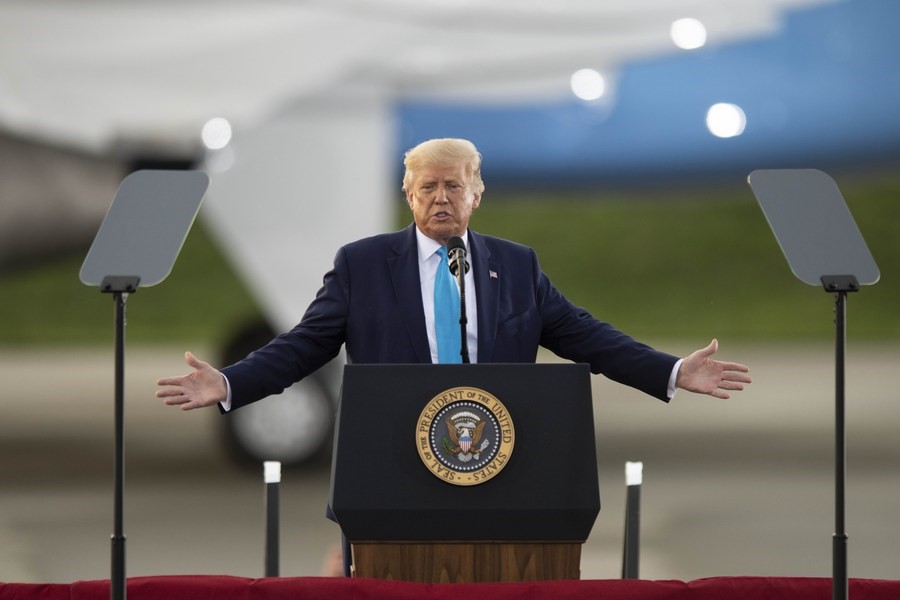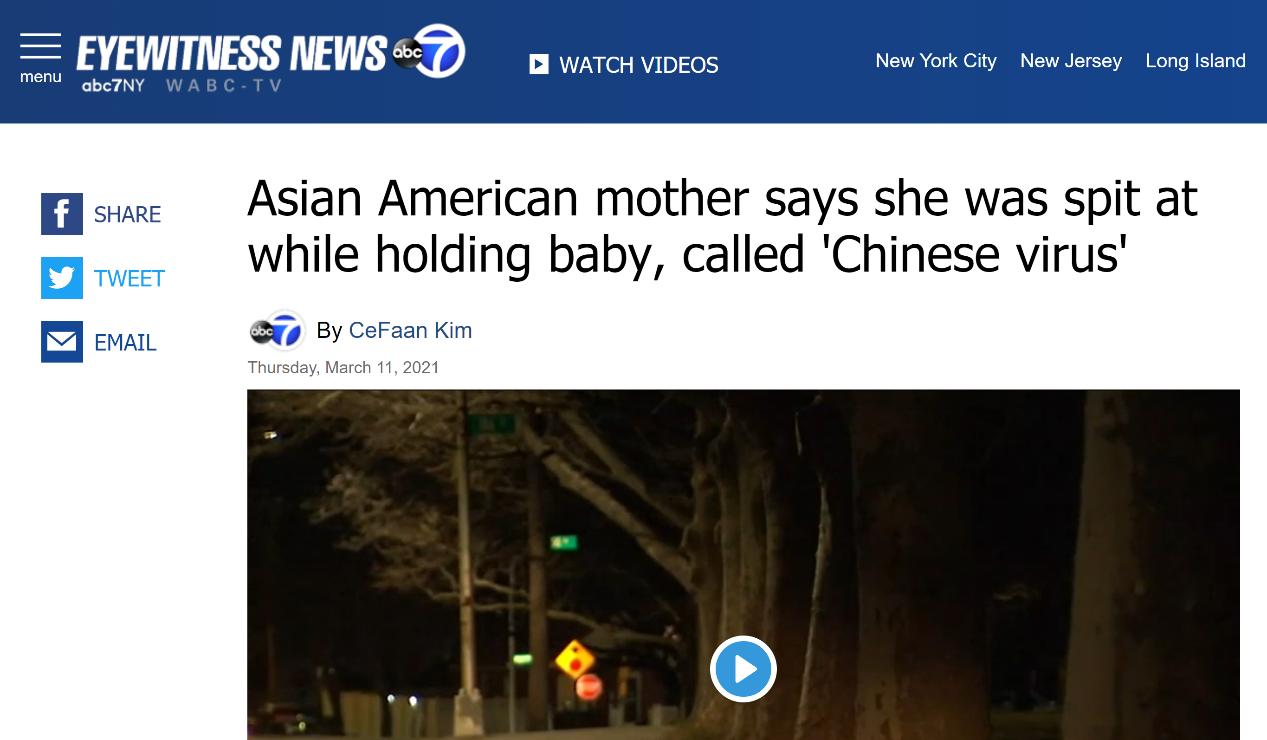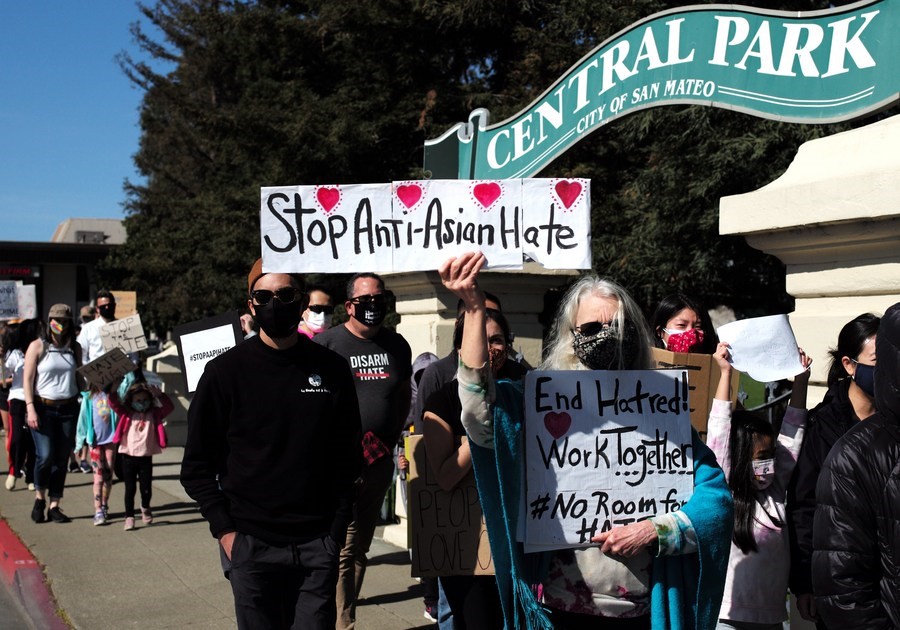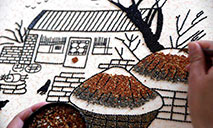Anti-Asian crime: a plague the U.S. fails to address

At the height of the nationwide protest sparked by the brutal killing of George Floyd, an epidemic of hate crimes targeting Asians was spreading in the shadows. Racist slurs in social media, intentional injuries on the street, and even targeted homicides in spas: anti-Asian hate crime has mutated into various forms, taking a heavy toll on the “Model Minority” community.
From March 19, 2020, to Feb. 28, there have been at least 3,795 reported hate incidents targeting Asian Americans, according to a recent report by Stop AAPI Hate, an NGO tracking incident of discrimination, hate, and xenophobia against Asian Americans and Pacific Islanders.
Another report published by the Center for the Study of Hate & Extremism at California State University, San Bernardino signals a worrying trend: Anti-Asian hate crime in 16 of America’s largest cities spiked 149% last year, even though “overall hate crime dropped 7% in 2020.”
Behind the chilling figures are lost loved ones, fractured bones, broken hearts, and shattered dreams. The Asian community is bleeding inside.

Chinese workers building a cut and a bank at Sailor's Spur in the Sierra foothills for the Central Pacific Railroad in California, 1866. (Photo/Underwood Archives)
An inherited disease
In modern medicine, a chronic illness is generally defined as a long-term health condition that often doesn’t have a cure. Some can be attributed to unhealthy living habits, while others are put down to genetic defects. When it comes to America’s long-standing anti-Asian racism, both inherited and environmental factors leave a mark.
As early as the 1850s, Chinese immigrants trekked their way across the vast ocean and settled on the American continent. Hardworking, indefatigable, and low paid, they were the perfect labor force for capitalists to exploit and were deservedly well-accepted by local mining and railroad construction factories. But they were not welcomed by local white workers who chanted the mantra of “Asians coming to steal White jobs” almost immediately upon their arrival.
The subsequent anti-Asian violence was fed by a California Supreme Court ruling that Asians were not allowed to testify against a White in court. Ever since then, the United States has cast a ferocious spell of anti-Asian racism, including the Chinese massacre of 1871, the Chinese Exclusion Act of 1882, and the Rock Springs massacre in 1885, to name but a few.
Diluted over time, America’s racism has sometimes been hard to trace. On March 17, the New York Times published an investigative article titled “The Victims of Agent Orange the U.S. Has Never Acknowledged”, in which the Times examined the fallout of the U.S. army’s spraying of herbicide over Laos during the Vietnam War. Heart-rending to see even in pictures, the victims with various disabilities and deformities in Labeng-Khok, Laos, are living testimony that the U.S. is still unable to apologize for its wrongdoing and admit that the afflicted lives do matter.

Former U.S. President Donald Trump participates in a rally in Latrobe, Pennsylvania, the United States, on Sept. 3, 2020. (Xinhua/Liu Jie)
The new variant
Most people can still remember Trump’s signature pronunciation of “China” during his presidential campaign back in 2015. The scorn in his tone and smile became a meme on the Internet, and later did appeal to his supporters, telling them that racism against Chinese, or more broadly, Asians, is totally acceptable.
Keeping that in mind, it was no surprise that Trump crossed out Corona (Virus) on his notes and replaced it with “China” during a press briefing. Twitter then became flooded with “#China Virus”, “#Kung Fu Virus”, and “#Panda Virus” hashtags. Indeed, a recent study published on March 18 by the University of California, San Francisco has found that Former U.S. President Trump tweeting the phrase “Chinese virus” in reference to COVID-19 last March triggered a surge in the use of anti-Asian hashtags on Twitter.
Trump’s blame China game during his last days in the White House was unprecedented, unpresidential, and a very dangerous move for a national leader. By blaming China, not only did he duck his responsibilities in handling a nationwide medical emergency, which he totally messed up, but also scapegoated China for the inaction and incompetence of HIS administration, from the downplaying of the severity of the virus to the dismissing of professional advice from experts like Dr. Fauci, and the reckless urging states to reopen.

A screenshot of the website of an ABC local news channel shows the reporting of a hate crime in which an Asian mom was spit at while holding her baby and called “Chinese virus” in Queens, New York City on March 11.
The collective racism against Asians didn’t stop with the chaotic and bloody end of Trump’s presidency. On the contrary, NOTHING HAS CHANGED. The record number of people voting for Trump in 2020 is proof that a record number of people had convinced themselves that blatant racism doesn’t matter when it comes from a U.S. president, or at least doesn’t matter that much. And the “insurrection on the U.S. Capitol Hill incited by Trump” also demonstrates how a lame duck’s words can still be translated into dangerous actions.

People take part in a rally against anti-Asian hate crimes in San Mateo, California, the United States, on Feb. 27, 2021. (Xinhua/Wu Xiaoling)
Slogans are no cure
If racism in America is a rotten tree that continues to sprout new leaves seasonally, some politicians and media outlets only serve as fertilizer to nourish it, intentionally or otherwise.
An optimistic view would be that now Trump has been muted by Twitter and Facebook, there is little chance he will be able to sell his “China Virus” game. But you can often still see headlines like “Cruz rebukes San Antonio City Council for denouncing 'Chinese virus' as hate speech”.
Another booster of anti-Asian racism is the media, where it is much more subtle and harder to recognize. If Trump’s Twitter frenzy against China is a visible cannon, then some media’s enduring false portraits of China are invisible bullets that can’t be ignored or escaped.
The U.S. media are so good at creating myths about China. In their “reporting” on China, the people are always suffering, the environment polluted, the officials corrupt and animals abused. Through their deception and exaggeration, China is the one to blame for a global pandemic. Through filters and false “accounts”, “human rights abuse” in Xinjiang is deemed to be true and riots on Hong Kong’s streets were justified (even after Nancy Pelosi’s own office was occupied) …
Every time a racist event occurs, the U.S. media chant for unity and solidarity in their own country, while at the same time sabotaging the exact same unity and solidarity of another country!
As long as U.S. politicians and media keep demonizing China, the status quo won’t change. Just like the gun violence and Black Lives Matter movements, slogans and encouraging tweets are merely a placebo, never the cure.

Demonstrators take part in a protest sparked by the death of George Floyd on the Brooklyn Bridge in New York, the United States, June 13, 2020. (Photo by Michael Nagle/Xinhua)
This March, American President Joe Biden announced that there would be enough vaccine ‘for every adult in America’ by the end of May. If he succeeds, that would be a huge step, given the fact that the human race is able to develop COVID-19 vaccines in such a short period, a medical marvel that will still impress many in hindsight. But when will the U.S. have a chance to “vaccinate” the whole of society against racism? Stop calling SARS-CoV-2 “China Virus”. That would be a good start.
Photos
Related Stories
- Obstacles to U.S. attempt to solidify trilateral cooperation with S. Korea, Japan
- UN review exposes dark side of U.S. human rights record
- S. Korea, U.S. defense, foreign ministers hold "2+2" talks about Korean Peninsula, regional issues
- Senate unanimously confirms Katherine Tai as U.S. trade representative
- Senate unanimously confirms Katherine Tai as U.S. trade representative
- Suspect in Atlanta shooting spree charged with multiple counts of murder
- Outcry against anti-Asian violence erupts amid ongoing investigation into Atlanta shootings
- NY governor should resign if probe confirms sexual harassment allegations: Biden
- U.S. DHS predicts number of migrant border crossings to reach 20-year high
- Eight people killed in multiple shooting incidents in U.S. state of Georgia
Copyright © 2021 People's Daily Online. All Rights Reserved.










